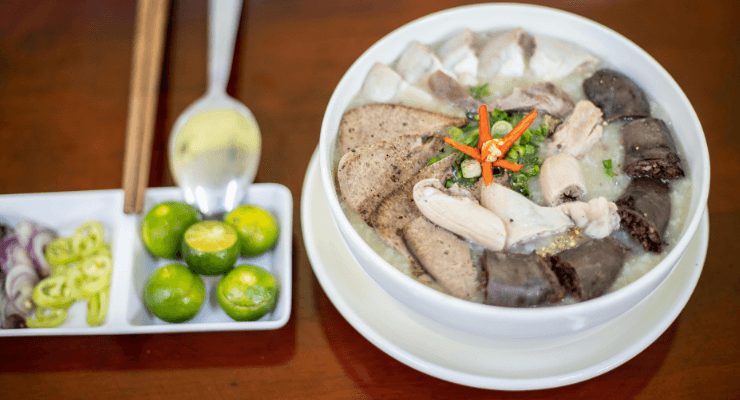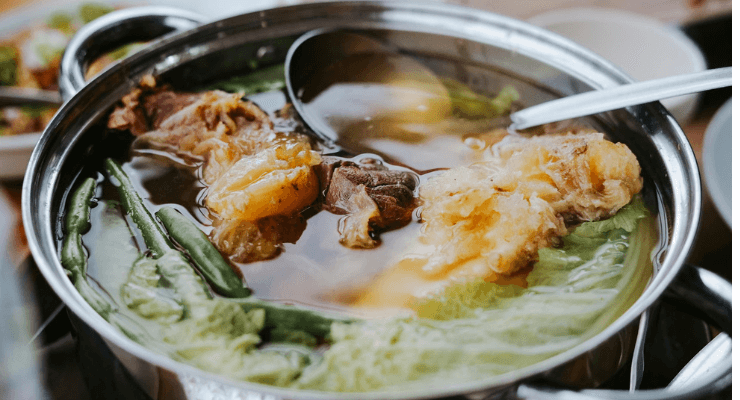
Sinigang is a beloved Filipino dish known for its unique and mouth watering sourness. Traditionally made with pork, this comforting soup is loaded with fresh vegetables and a tangy broth that awakens the taste buds. Pork Sinigang is an essential dish in Filipino cuisine, often enjoyed during rainy days or special family gatherings.
The key ingredient that sets Sinigang apart is its souring agent, typically tamarind, which brings a bright and refreshing flavor to the rich and tender pork. While tamarind is the most common choice, other souring agents like calamansi, green mango, or even tomatoes can be used. In this recipe, we will focus on the classic Pork Sinigang made with tamarind.
What is Pork Sinigang?
Pork Sinigang is a traditional Filipino sour soup, with pork being the most commonly used protein. The dish combines the flavors of a sour broth with tender chunks of pork and various vegetables like kangkong (water spinach), sitaw (long beans), eggplant, and radish. It’s a hearty and nutritious meal, often served with rice to complement the tangy broth.
The beauty of Sinigang lies in its flexibility—you can adjust the sourness to your liking, swap vegetables based on what’s available, or even replace pork with shrimp, beef, or fish for a different twist.
Ingredients for Pork Sinigang
Here’s what you’ll need to make a delicious pot of Pork Sinigang:
Ingredients:
– 2 lbs pork belly (or pork shoulder): Cut into bite-sized pieces. Pork belly is ideal for its fat content, which adds richness to the soup.
– 1 onion: Chopped.
– 2 tomatoes: Quartered.
– 2-3 cloves garlic: Minced.
– 1 packet of tamarind soup mix (or 1 cup fresh tamarind if available): The main source of the sourness.
– One (1) radish (labanos): Sliced thinly.
– 1 eggplant: Sliced.
– 1 bunch of kangkong (water spinach): Washed and cut into 2-inch pieces.
– One (1) cup long beans (sitaw): Cut into 2-inch pieces.
– 1-2 green chili peppers (optional): For a slight kick.
– Fish sauce: To taste.
– Salt and pepper: To taste.
– 6 cups water: Adjust as needed for the broth.

How to Make Pork Sinigang: Step-by-Step Guide
Step 1: Prepare the Pork
Start by washing the pork belly (or pork shoulder) and cutting it into bite-sized pieces. Put it to the side while you get the vegetables ready.
Step 2: Sauté the Aromatics
In a large pot, heat a bit of oil over medium heat. Sauté the minced garlic, onions, and tomatoes until they become soft and fragrant. The tomatoes should release their juices, adding a subtle sweetness to the broth.
Step 3: Add the Pork
Once the aromatics are sautéed, add the pork belly to the pot. Brown the pork on all sides, letting the fat render slightly to enhance the flavor of the soup.
Step 4: Pour in the Water
Pour about 6 cups of water into the pot, enough to cover the pork completely. Heat it until it reaches a boil, then lower the heat and allow it to simmer. Remove any foam or impurities that float to the top to maintain a clear broth.
Step 5: Add Tamarind Soup Mix
Once the pork is tender (after about 45 minutes to 1 hour of simmering), add the tamarind soup mix. Stir well and taste the broth. If you’re using fresh tamarind, boil the tamarind pods separately until soft, mash them, and strain the juice into the soup.
Step 6: Add the Vegetables
After adding the tamarind, toss in the radish and eggplant. Let them cook for about 5-7 minutes until they soften slightly. Then, add the sitaw and green chili peppers (if using). Simmer for an additional 3-5 minutes.
Step 7: Season and Add Greens
Adjust the flavor of the broth by adding fish sauce, salt, and pepper to your liking. Finally, add the kangkong during the last 2 minutes of cooking, as it wilts quickly. You can adjust the sourness by adding more tamarind mix or fresh tamarind juice, depending on your preference.
Step 8: Serve
Once the vegetables are cooked through and the pork is tender, your Pork Sinigang is ready! Serve it hot with a side of steamed white rice to balance the tangy flavors.
Tips for the Perfect Pork Sinigang
– Use Pork Belly for Richness: Pork belly is the best cut for Sinigang due to its fat content, which adds a luxurious mouthfeel to the broth. If you prefer a leaner version, pork shoulder or ribs work just as well.
– Adjust the Sourness: Sinigang’s signature sourness can be tailored to your taste. Start with a smaller amount of tamarind and gradually add more until you reach your desired level of tartness.
– Add the Greens Last: Vegetables like kangkong and long beans should be added at the end to maintain their freshness and vibrant color.
– Don’t Overcook the Pork: The key to a perfect Sinigang is tender, juicy pork. Make sure to simmer it on low heat to avoid toughening the meat.
Pork Sinigang Variations
1. Sinigang na Baboy sa Bayabas (Pork Sinigang with Guava)
If you want a sweeter version of Sinigang, replace the tamarind with ripe guava. This version is less sour but equally delicious, offering a sweet and fruity twist to the traditional broth.
2. Sinigang na Baboy sa Sampalok (Tamarind Pork Sinigang)
For a more traditional touch, use fresh tamarind pods instead of the tamarind soup mix. It requires a bit more effort, but the result is a more natural, less processed flavor.
3. Sinigang with Shrimp (Sinigang na Hipon)
Not a fan of pork? Swap the pork belly for shrimp to create a lighter, seafood-based version of this classic dish. Just be sure to reduce the cooking time for the shrimp, as they cook quickly.
4. Sinigang with Beef (Sinigang na Baka)
Beef Sinigang offers a heartier and richer broth. Use beef short ribs or shank for a melt-in-your-mouth texture. This variation is perfect for beef lovers.
Serving Suggestions for Pork Sinigang
While Sinigang is often enjoyed on its own, pairing it with the right sides can elevate the dish to a whole new level. Here are a few suggestions:
– Steamed White Rice: The classic pairing for Sinigang. The tangy broth complements the neutral flavor of the rice, creating a perfect balance of flavors.
– Fried Fish or Pork: Add a crispy side dish like fried tilapia or pork belly (lechon kawali) for added texture and flavor.
– Grilled Vegetables: Serve grilled eggplant or zucchini alongside your Sinigang to add a smoky element to the meal.
– Spiced Vinegar Dip: Enhance the savory flavors by serving Sinigang with a side of spiced vinegar, perfect for dipping meat or vegetables.
Conclusion: Why Pork Sinigang Should Be Your Next Meal
Pork Sinigang is not just a dish—it’s a celebration of Filipino flavors. Its tangy, savory broth and
tender pork make it a perfect comfort food for any occasion. Whether you’re new to Filipino cuisine or a seasoned fan, this dish offers a delightful combination of flavors that will leave you craving for more. Try this recipe at home, customize it to your liking, and enjoy the warm embrace of a bowl of Pork Sinigang!
FAQs About Pork Sinigang
1. Can I use other cuts of pork for Sinigang?
Yes! While pork belly is the most commonly used cut, you can also use pork shoulder, ribs, or even pork chops. Each cut offers a slightly different texture, with belly being the richest due to its fat content.
2. How can I make Sinigang less sour?
If you find your Sinigang too sour, try adding a bit of sugar or more vegetables like tomatoes to balance the flavor. You can also reduce the amount of tamarind mix or use a milder souring agent like green mango.
3. Can I cook Sinigang without tamarind?
Yes, you can use alternative souring agents like calamansi, green mango, or even unripe tomatoes to achieve a different flavor profile. While tamarind is traditional, many regions in the Philippines have their own variations.
4. Can I make Sinigang in an Instant Pot?
Absolutely! You can pressure cook Pork Sinigang in an Instant Pot. Simply sauté the aromatics first, then add the pork and water. Pressure cook on high for 35 minutes, release the pressure, and then add the vegetables and tamarind mix. Cook for an additional 5 minutes using the sauté function.
5. What is the best way to store and reheat leftovers?
Store any leftover Pork Sinigang in an airtight container in the refrigerator for up to 3 days. For reheating, just warm the soup on the stovetop until it reaches a simmer. You can also freeze the soup for up to 3 months, although the vegetables may lose some of their texture after freezing.
As an Amazon Associate, I earn from qualifying purchases.



